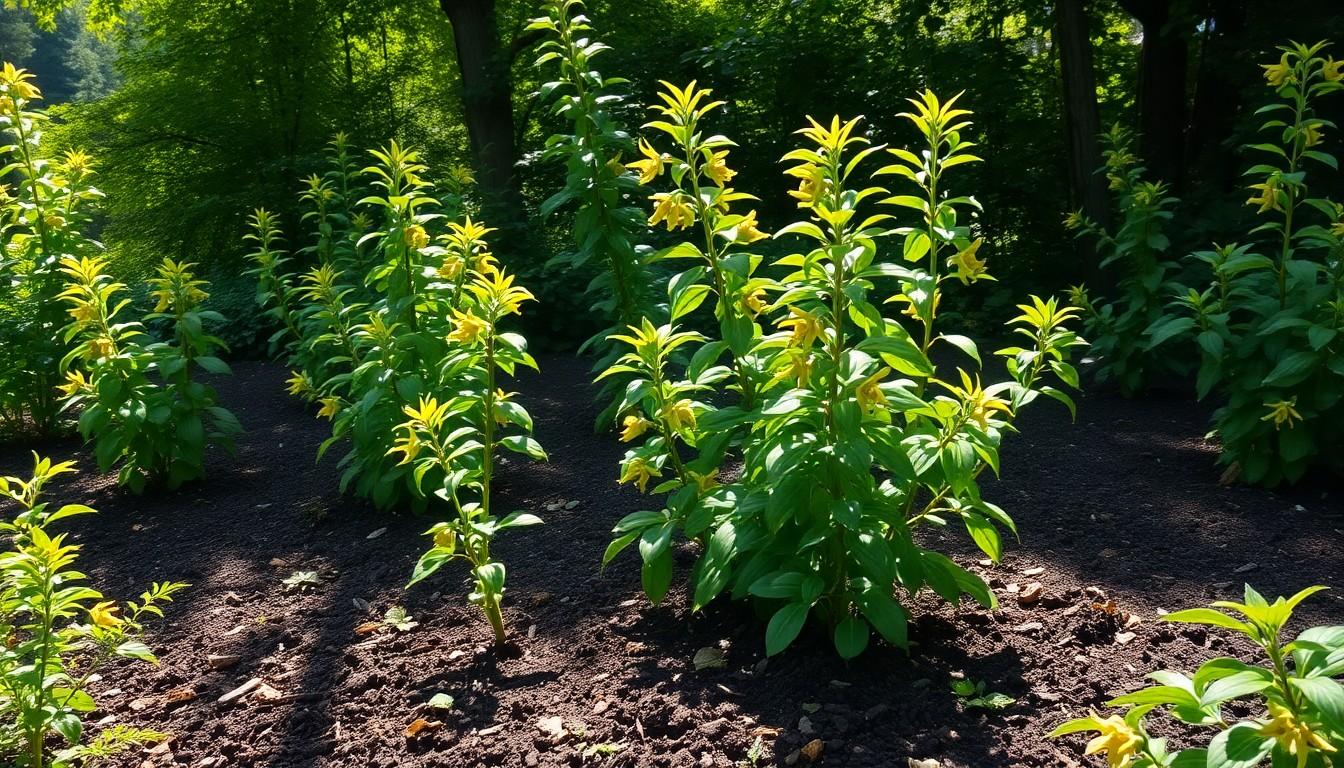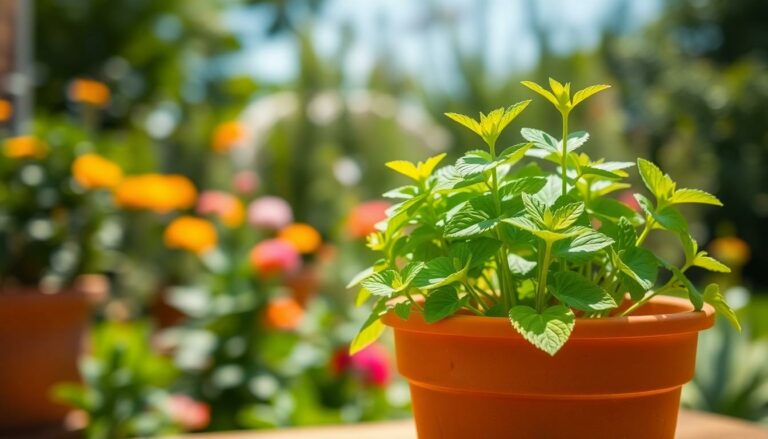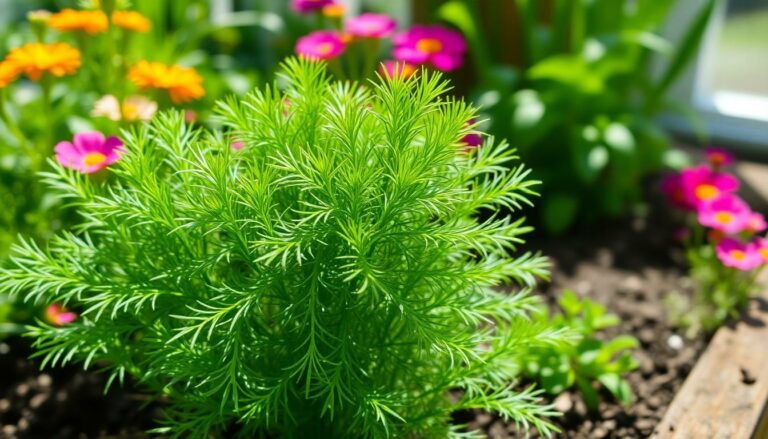Witch hazel isn’t just a quirky name; it’s a botanical powerhouse that can elevate any garden. This plant, known for its striking yellow flowers and versatile uses, deserves a spot in every green thumb’s repertoire. But before you rush to add it to your collection, let’s talk about how to keep this beauty thriving without turning your garden into a witch’s brew of chaos.
Witch Hazel Plant Care
Witch hazel thrives best in well-drained soil rich in organic matter. It prefers partial shade but tolerates full sun, particularly in cooler climates. Regular watering helps keep the soil consistently moist, promoting healthy growth. Mulching around the base protects the roots and retains soil moisture.
Pruning enhances air circulation and prevents disease, particularly after flowering ends. The ideal time for pruning is late winter or early spring, prior to new growth. Fertilization should occur in early spring using a balanced fertilizer to encourage vigorous growth and flowering.
Pests such as aphids and spider mites may affect witch hazel. Monitoring plants regularly helps catch infestations early, leading to timely treatment. Applying insecticidal soap provides an effective means of control without harming beneficial insects.
Diseases like powdery mildew are also a concern. Proper spacing between plants ensures adequate airflow, reducing humidity levels around the foliage. Treatment involves removing infected leaves and applying fungicides if necessary.
Witch hazel plants benefit from seasonal care, including attention to watering, pruning, and pest management. By focusing on these key aspects, gardeners can enhance the growth and beauty of their witch hazel plants. The vibrant yellow flowers in fall and winter further enhance the garden’s aesthetic, underscoring the plant’s multifaceted appeal.
Ideal Growing Conditions

Witch hazel thrives under specific conditions that maximize its growth potential. Understanding these needs can lead to a flourishing plant in the garden.
Sunlight Requirements
Witch hazel prefers partial shade but adapts well to full sun in cooler regions. Bright, indirect light allows for healthy foliage development. Too much direct sunlight in hot climates can cause leaf scorch, impacting its overall health. A balance of sunlight exposure supports robust growth and vibrant blooms.
Soil Preferences
Well-drained, organic-rich soil is essential for witch hazel. Moisture retention without waterlogging promotes optimal root development. A pH range of 6.0 to 7.0 is ideal for nutrient uptake. Adding organic matter like compost enhances soil structure. Ample drainage ensures that excess water does not accumulate, which helps prevent root rot and other diseases.
Watering Techniques
Witch hazel requires careful attention to watering techniques for optimal health. Ensuring the plant gets the right amount of water is crucial in supporting its growth and beauty.
Frequency of Watering
Watering should occur consistently, especially during dry spells or hot months. In general, aim to provide deep watering every 1 to 2 weeks. Frequency may increase during particularly hot periods. Checking soil moisture at a depth of 2 to 3 inches helps determine when to water. If the topsoil feels dry, it’s time to hydrate the plant. Newly planted witch hazel requires more frequent watering until it establishes strong roots, while established plants typically tolerate longer intervals between watering.
Signs of Overwatering
Overwatering manifests through various symptoms, signaling the need for immediate adjustment. Yellowing leaves often indicate excess moisture in the soil. Wilting, despite wet conditions, shows stress from root rot. Roots left sitting in water may start to decay, undermining the plant’s health. Checking for a foul smell from the soil can reveal rot issues. A raised bed or well-drained soil mitigates the risk of overwatering, ensuring the plant thrives without complications.
Pruning and Maintenance
Pruning and maintenance contribute significantly to the health and appearance of witch hazel. Effective pruning enhances airflow and encourages new growth.
Best Time to Prune
Timing plays a crucial role in pruning witch hazel. The ideal period occurs in late winter or early spring before new growth begins. This approach minimizes stress on the plant while promoting healthy new foliage. Pruning during dormancy allows the gardener to assess the plant’s shape and overall health. Flowers emerge on old wood, so avoiding late spring or summer pruning preserves blooms. Removing dead or damaged branches is important in this pruning window. Regular maintenance ensures a more vibrant display in the growing season.
Tools for Pruning
Choosing the right tools is essential for effective pruning. Gardeners benefit from using clean, sharp pruning shears for small branches. Loppers work well for thicker stems, ensuring clean cuts that promote healing. A saw may be necessary for larger branches or structural pruning. Keeping tools sanitized prevents the spread of disease. Additionally, gloves protect hands while working with branches. Using these tools properly increases the overall health and aesthetics of the witch hazel plant. Regular maintenance of tools, including sharpening and cleaning, ensures optimal performance throughout the pruning process.
Common Pests and Diseases
Witch hazel can attract various pests and face specific diseases that may hinder its growth. Identifying these issues promptly plays a crucial role in maintaining plant health.
Identifying Pests
Aphids represent one of the most common pests on witch hazel. These small, soft-bodied insects often cluster on new growth and can cause distorted leaves. Spider mites, another significant threat, may lead to yellowing leaves and fine webbing on the undersides. Signs of infestation include visible damage, such as stippling on leaves or drooping foliage. Monitoring plants regularly fosters early detection, ensuring a swift response to pest issues.
Treatment Options
Insecticidal soap effectively controls aphids and spider mites, providing a safe solution for gardeners. Spray the affected areas with insecticidal soap weekly until the pests are gone. Neem oil also works well against a variety of pests; it disrupts their life cycle and deters new infestations. For severe outbreaks, introducing beneficial insects like ladybugs can provide natural pest control. Regularly inspecting and treating plants maintains their vibrant health and supports robust growth.
Caring for witch hazel is a rewarding endeavor that enhances any garden’s beauty. By understanding its specific needs for soil, light, and water, gardeners can ensure this unique plant thrives. Regular maintenance including pruning and pest monitoring keeps witch hazel healthy and vibrant. With its striking yellow flowers and resilience, witch hazel not only adds aesthetic value but also serves practical purposes in herbal remedies. By following the outlined care tips, gardeners can enjoy the many benefits this remarkable plant offers throughout the seasons.





